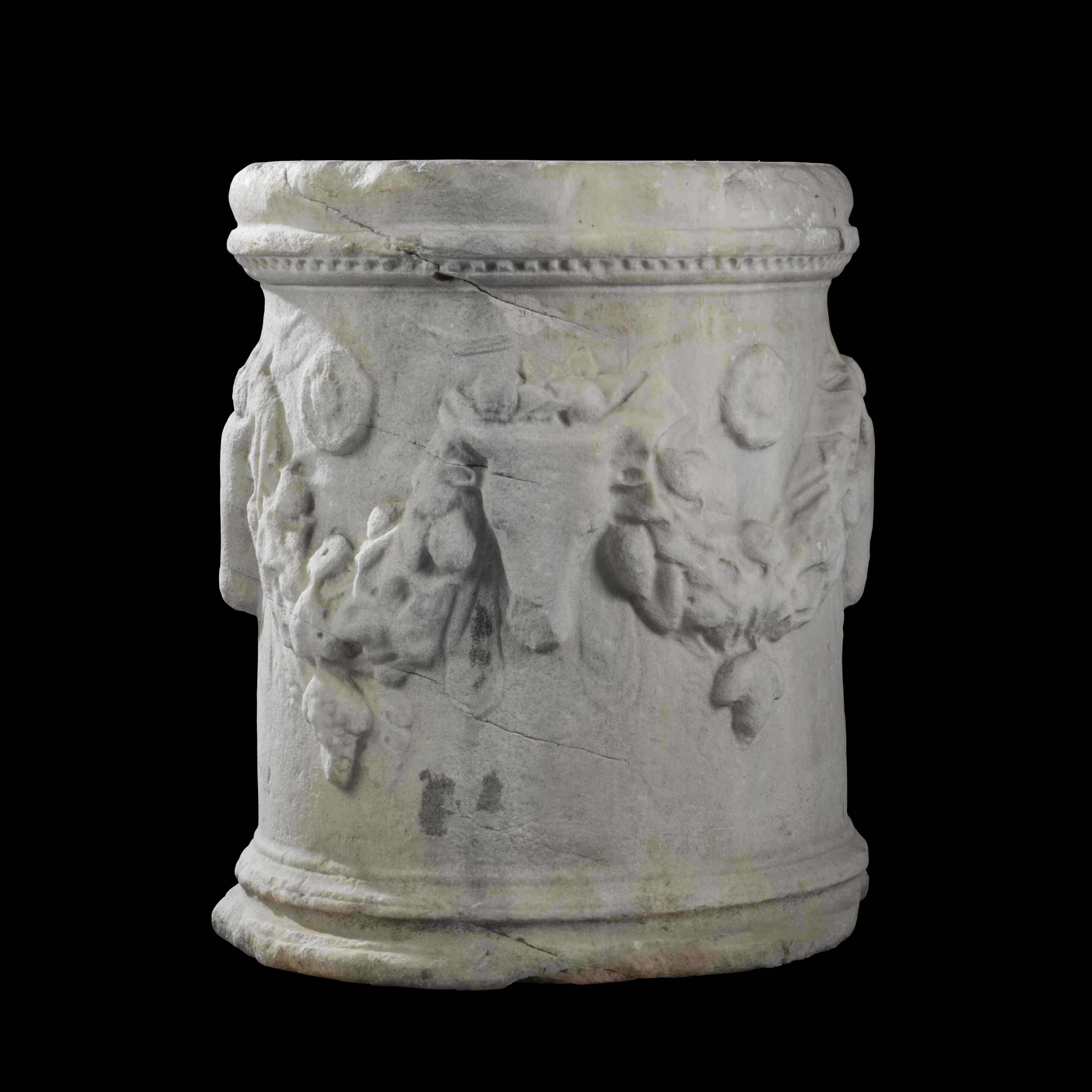Rare brown-red biconical urn with its lid
The short, truncated body has an inverted shoulder, a long funnel-shaped neck with a flaring rim and rests on a flat-bottomed base. The single, round handle is attached obliquely just below the shoulder. The lid consists of a large sphere on a long neck, the structure of which makes the lid quite unstable. The body, including the underside, is completely covered with a red engobe.
Note
Villanovan urns such as this also appear in bronze and painted pottery. We know them from the region of Vulci, Bisenzio and Saturnia. Experts have assumed that the urns’ large globes could symbolise stylised human heads reduced to their simplest form. Etruscan pottery workshops continued to produce this very characteristic and traditional shape even as late as the beginning of Etruscan black figure vase painting.
21.7 cm high (w/o lid)
Galleria Antiquaria Genova, prior to 18/12/195
Collection Ligabue, Venice, no. 2, acquired from the above
Jacques Chamay (éd.)
L’Art des peuples italiques : 3000 à 300 avant J.-C, Hellas Roma 1994, p. 96 no. 4
Edith Hall Dohan
Italic tomb- groups in the University Museum, London 1942, 81, nos. 34, pl. 43
M.A. Fugazzola Delpino
“La cultura villanoviana. Guida ai materiali della prima età del Ferro nel Museo di Villa Giulia”, Rome 1984, 47 & 73, no. 8
Mauro Cristofani
I bronzi degli Etruschi, Novara 1985, 214, no. 107 & 288








